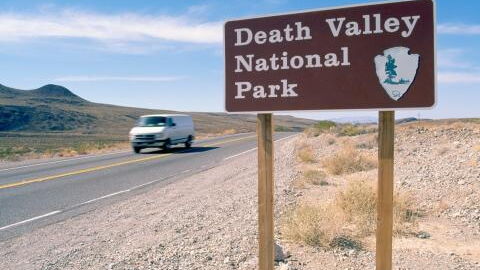A recent scientific study has warned that a massive earthquake will hit the US west coast ‘no matter what we do’.
Discover our latest podcast
It has been around 300 years since the last earthquake on the southern San Andreas Fault, while the average interval has been 180 years over the past 1,000 years.
It made researchers wonder why ‘the most treacherous seismic hazard in California’ hasn’t occurred yet.
They believe the answer may lay quite literally on the button of the ancient Lake Cahuilla that is emptying and disappearing.
If disaster was to strike, it would affect Los Angeles County which alone has 10 million people.
The last devastating earthquake happened there in 1994 and had a magnitude of 6.7. It resulted in 70 deaths and caused $20 billion in damage.
Scientists raise alarm over 'big' impending earthquake
San Andreas Fault - where the Pacific and North American tectonic plates collide - hasn’t produced any large tremor for 300 years while it would normally occur every 180 years. Scientists believe that what it means is that the 'big one' is well overdue.
The friction between tectonic plates is known to trigger earthquakes while other important factors play a role too.
The San Andreas fault used to trigger a major earthquake every 180 years or so, but there hasn't been one for nearly 300 years. Have Californians just got lucky, or could a dried-up lake be protecting them? https://t.co/ydjvdYiBX8
— New Scientist (@newscientist) June 13, 2023
US Geological Survey research geologist Belle Philibosian said about the fault in 2011:
It’s accumulated a large amount of energy analogous to a taut rubber band. We should be anticipating that the rubber band could snap at any time.
Read more:
⋙ Mexico's most dangerous volcano is 'coming to life' and could force evacuation of millions
⋙ Mount Etna: Europe's most active volcano erupts, covering Sicilian city with ash
Here is why the earthquake hasn’t occurred yet
Prior research into San Andreas Fault drew a link between large earthquakes and large bodies of water, and in particular, the filling of an ancient lake that has grown and ebbed across the centuries.
Last Wednesday a group of scientists published a paper in the journal Nature and it supports the link established earlier.
Ryley G. Hill, a Ph.D. candidate in the Department of geological sciences at San Diego State University and the Scripps Institution of Oceanography in La Jolla, California said:
We are not trying to predict any earthquake that is going to happen in the future, but we might be able to say why we haven’t had one in the last 300 years.
According to him, the stability of the fault can be explained by the state of the ancient Lake Cahuilla in Colorado which was full of water in the Coachella and Imperial Valleys when previous earthquakes took place.
New research shows lack of seismic activity in the southern San Andreas fault in California may be due to the drying of the nearby Salton Sea and provides clues on future potential earthquake triggers, including projects aimed to refill the body of water. https://t.co/LQRKmQm0Qa
— The Washington Post (@washingtonpost) June 7, 2023
For the last three centuries, the lake has drained and all that remains from it is the Salton Sea.
The researchers believe the draining of the lake made the earthquake less likely.
Lucy Jones, a seismologist and the chief scientist at the Dr. Lucy Jones, Center for Science and Society, called the explanation ‘plausible’ but warned there were still reasons to worry.
The southern San Andreas, part of a network of faults that run across California, has the most potential for destruction because of the large number of people who live in the area.
Read more:
⋙ This woman who was declared dead wakes up 8 hours later during her funeral (VIDEO)
Sources used:
- Express: 'Huge earthquake to strike California sooner rather than later, admit scientists'
- NY Times: 'The San Andreas Fault Is Sleepy Near Los Angeles. Researchers Have an Idea Why'















